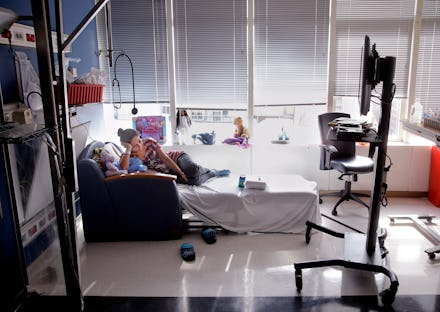China Just Took a Major Step to Help Its Health Care System the U.S. Would Never Consider

You could say the future is Mao... at least medically speaking.
China's cabinet, the State Council, announced Monday that the country would seek to double the number of doctors by 2020. According to China's top decision-making body, the current situation is not sustainable and must be remedied soon.
"Healthcare resources overall are insufficient, quality is too low, our structures are badly organized and service systems fragmented. Parts of the public hospital system have also become bloated," the Council said, according to Reuters.
The new road map calls for "two general doctors per thousand people by 2020," Reuters reports. If achieved, the new target would put China's doctor-patient ratio significantly ahead of the United States'. Today, the United States has less than one doctor for every thousand Americans.
The Chinese announcement comes amid growing frustration with the quality of medical care in that country. Faced with the unique demands of administering to 1.5 billion people, most doctors are overworked, resulting in long waiting times and short appointments. Waitings rooms are typically packed to capacity and more often than not resemble a steamy DMV. Violent patient outbursts against doctors are a routine occurrence.
In one instance, a husband-and-wife team of government officials in the city of Nanjing beat a nurse with an umbrella as she lay motionless on the floor. The couple had been angry that their daughter was sharing a room with a male patient. The nurse may now be paralyzed.
Doctors in America. While the U.S. may not be facing open war against medical professionals, China's announcement highlights another problem which has only grown in recent years.
According to a new Association of American Medical Colleges report, Americans can expect to see a "shortfall of between 46,100 and 90,400 physicians by 2025." While the overall number of physicians is expected to rise slightly, it will be far outpaced by the growth of America's elderly population and newly covered people under the Affordable Care Act. The trend held for both primary care physicians and specialists.
"It's going to be increasingly more difficult for people to access the care that they need," AAMC government relations director Tannaz Rasouli told Mic. "People are living longer and frequently living with multiple chronic illness that require ongoing care."
The AAMC warning comes as Americans already face starkly unequal options accessing healthcare. A separate report by the American Academy of Family Physicians found that while the U.S. overall has 80 doctors per 100,000 people, the number shrank to 68 when only looking at rural areas. In urban areas, that number bounced up to 84. A predicted surging demand for the coming years will only exacerbate these numbers.
Going forward. "What we found was that no single solution is going to be sufficient to filling the nation's healthcare needs," Rasouli said, adding that a mutli-pronged approach was the only viable option.
Fixing the problem in the U.S. is actually a lot easier than you might think. The answer lies in the right combination of incentives. In many cases, merely expanding the scope of existing programs would be enough.
For example, in Tennessee, the state has a program that allows it to reimburse up to $50,000 in student medical loans in exchange for a two-year commitment to an underserved area. Similar programs also exist in Michigan, Kansas and California.
Unfortunately for most, these amounts just aren't enough. Today, average medical school debt is well over $150,000. With payments looming over most graduates, it is not surprising that big city jobs (with big city salaries) are more attractive to new graduates. According to Indeed.com, the average salary of a New York City primary care physician is $121,000.
Funding for doctors' residency is also a pricey problem. The U.S. government usually covers $40,000 of the $152,000 per resident per year cost at training hospitals, but the number of resident reimbursements has been capped since 1997. Expanding both the number of residents supported and the amount of the reimbursement could be done with the simplest of legislation and would go a long way toward solving the problem.
Everyone gets sick, and everyone needs doctors. Addressing America's physician shortfall should be a bipartisan issue that everyone can agree on. Right now there are just too few doctors clustered in too few areas. The Affordable Care Act granted unprecedented access to health care, but that achievement is a meaningless gesture if Americans have no doctors to go to.